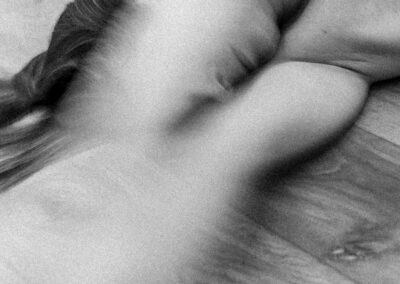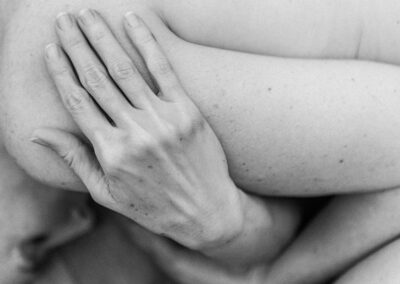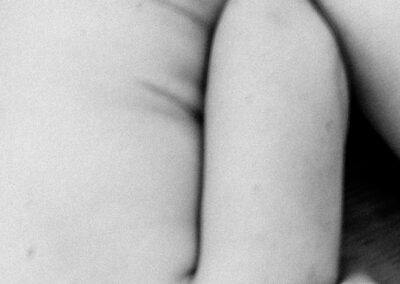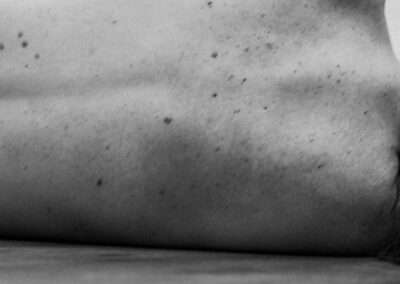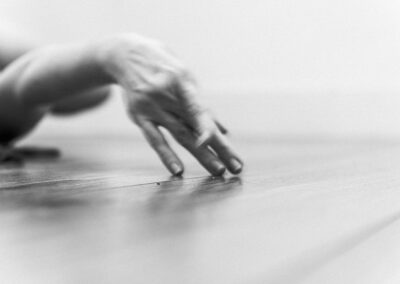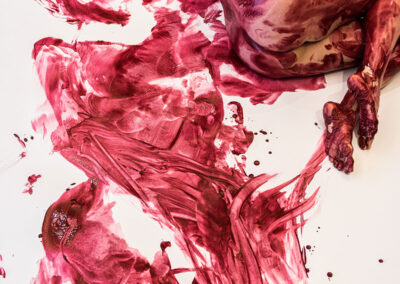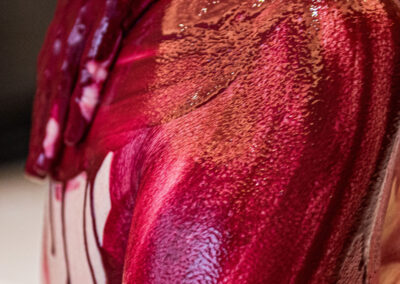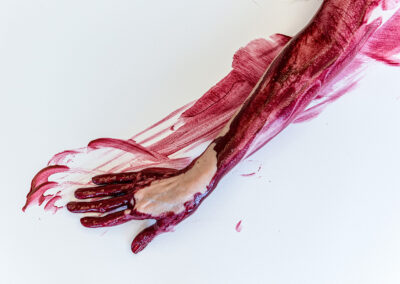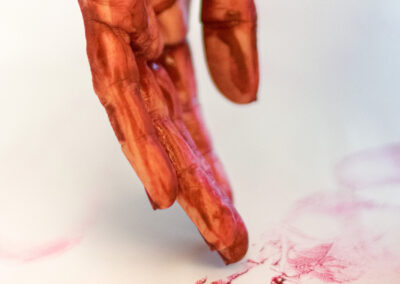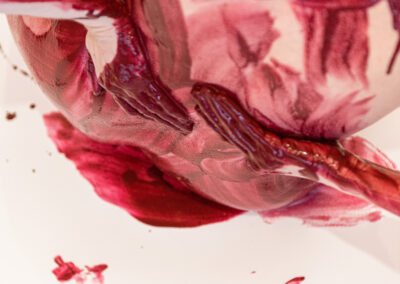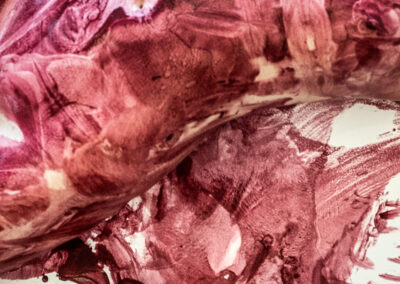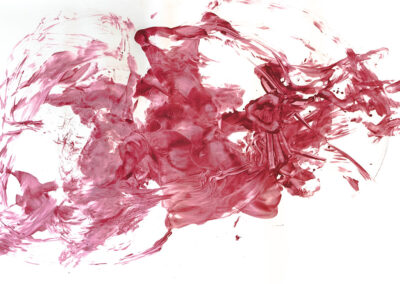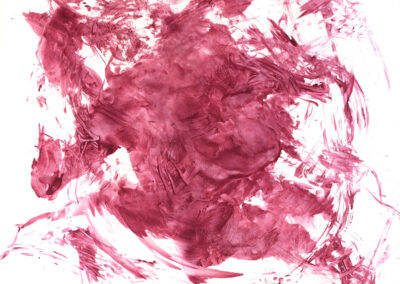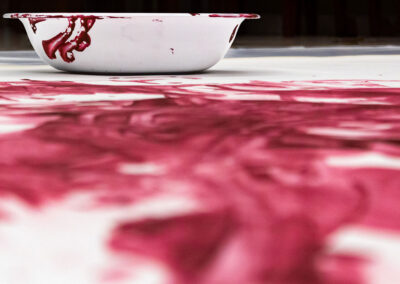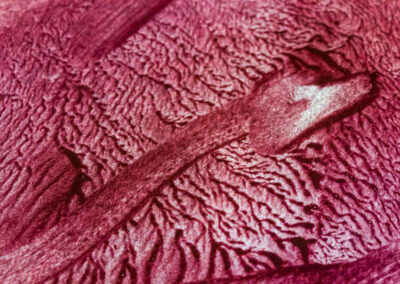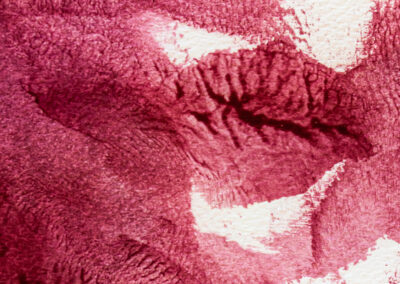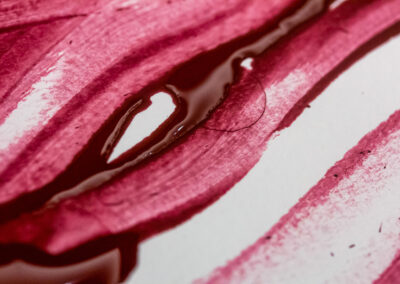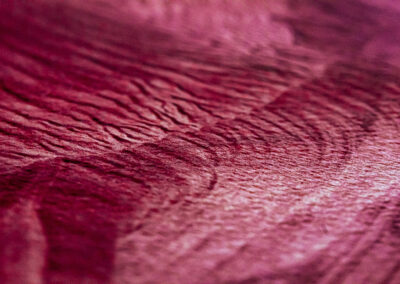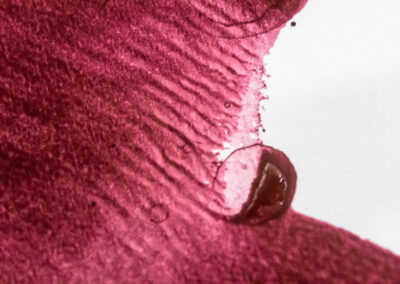By Leonardo Ramadinha
A circle is made and what was the end is now the beginning. In a moment of pain, it’s needed to say goodbye to almost everything and leave behind what is not core, everything that is not mater. There is a need to be stripped of everything. There are no strings, no clothes, there is nothing that is not essence. The artist is naked. Alive and dead, the artist is complete.
From new life to death, from purity to passion.
There is a tension in the landscape. Colors, shapes, scents are gone. The flowers left along the way, today are only stories. Intricacy and fragility in the ephemeral nature of life. It is sacred that profanes, it is life that dies to be reborn. Light and shadow that inhabit body and soul.
Soul that experiences, body that leads.
Body that is time and space in life. Body that is temple, Sacred Feminine. Freed, exposed, delivered, that in free movements becomes self-fertilized in metaphors. Pleasure and pain, in a trance, intertwined in a vital allegory. Fluid and liquid; it is a body that bathes in life and draws for the soul.
Here is the new spring, where then the flowers left behind are the scars left on the skin of art.
A circle is made and what was the beginning is now the end.
Once, once again, yet.
O tempo que o tempo tem
Performance and video making: Liane Roditi
Sound: Artist heartbeat – editing Dalton Coelho
Duration: 4:44
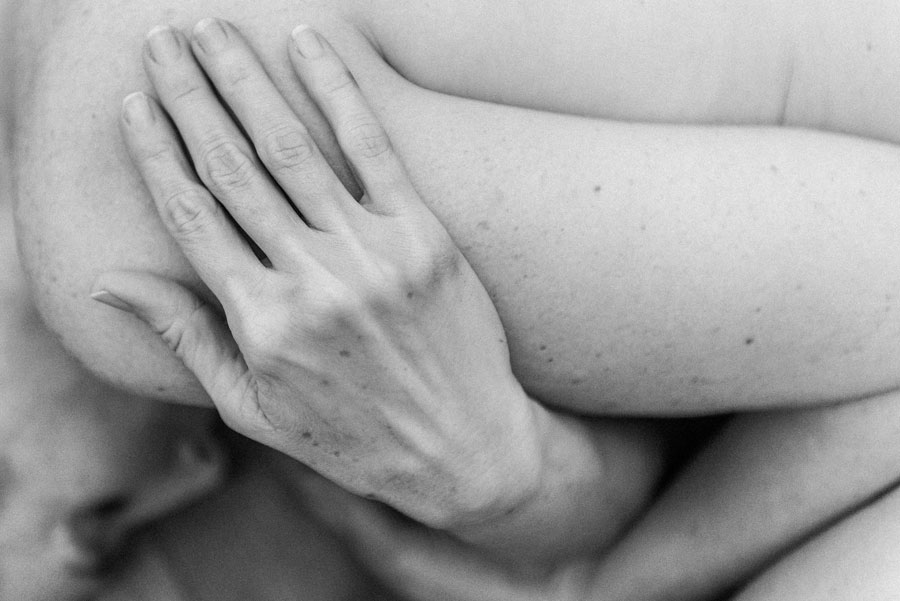
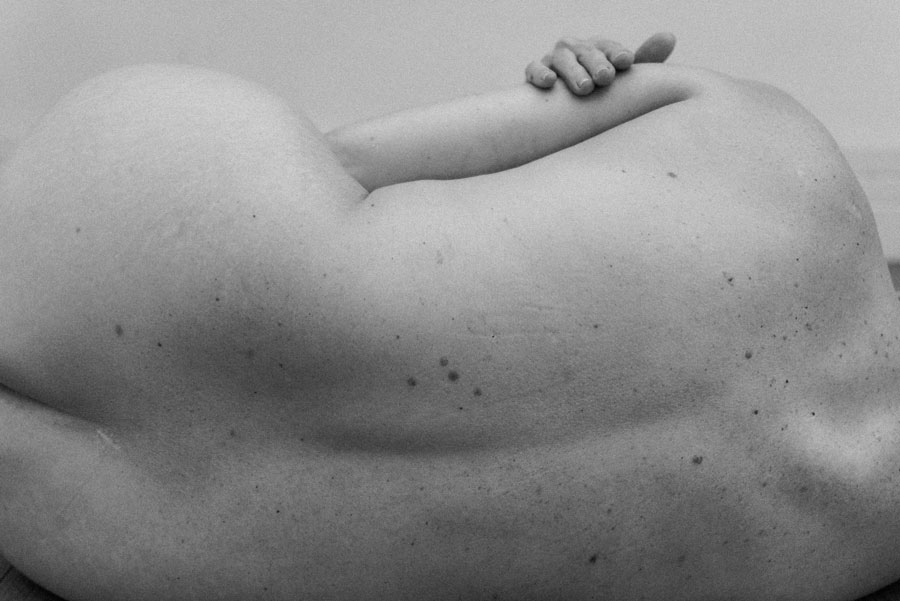
Series: Uma vez, outra vez, ainda
Title: No sol pleno ou a meia-sombra
Performance and video making: Liane Roditi
Scenary: Liane Roditi e Noni Levinson
Video image processing: Claudia Ramadinha
Duração: 2:39
The project
The project was born in a moment of pain and reclusion of the artist. The desire to express about life cycles in the female universe using the body as a guiding thread, resulted in an intense performance of body movements, executed on the floor of a limited space, generating a tension between birth and death, body, time and space. The flowers symbolize the feminine, and at first they were present in the performance. With time, the work got stronger and the flowers functioned only as an object of creation. The act, only with the naked, surrendered, exposed body, and the repetition of movements with continuity, in a self-fertilization, represent the flowers and the cycles. The duality of expressions and movements is present throughout the project. A serene face in opposition to strong, tense and marked movements.
As the project progressed, the idea of painting canvases with her own body emerged. In this new act, the paint prepared in the color of coagulated blood is in an agate basin, so used by women throughout history, both in childbirth and in war wards, once again symbolizing life cycles. The duality is shown in the serenity of expression and the elegance of gestures that counters with the more abrupt movements, and the sensation generated by what seems to be a bloodbath. The artist is again in a limited space, this time completely closed, where she bathes in paint and paints the canvas with her own body.
This work permeates several issues in the female universe. At each cycle we experience death and rebirth. Throughout life this happens constantly and, for women (most of the time), systematically every month for a long period. Breakups and restarts are sometimes painful. The gestation and the life that arises from the womb are intense. Pleasure and pain are mixed. In the unfolding, the issue of violence against women appears with more intensity.
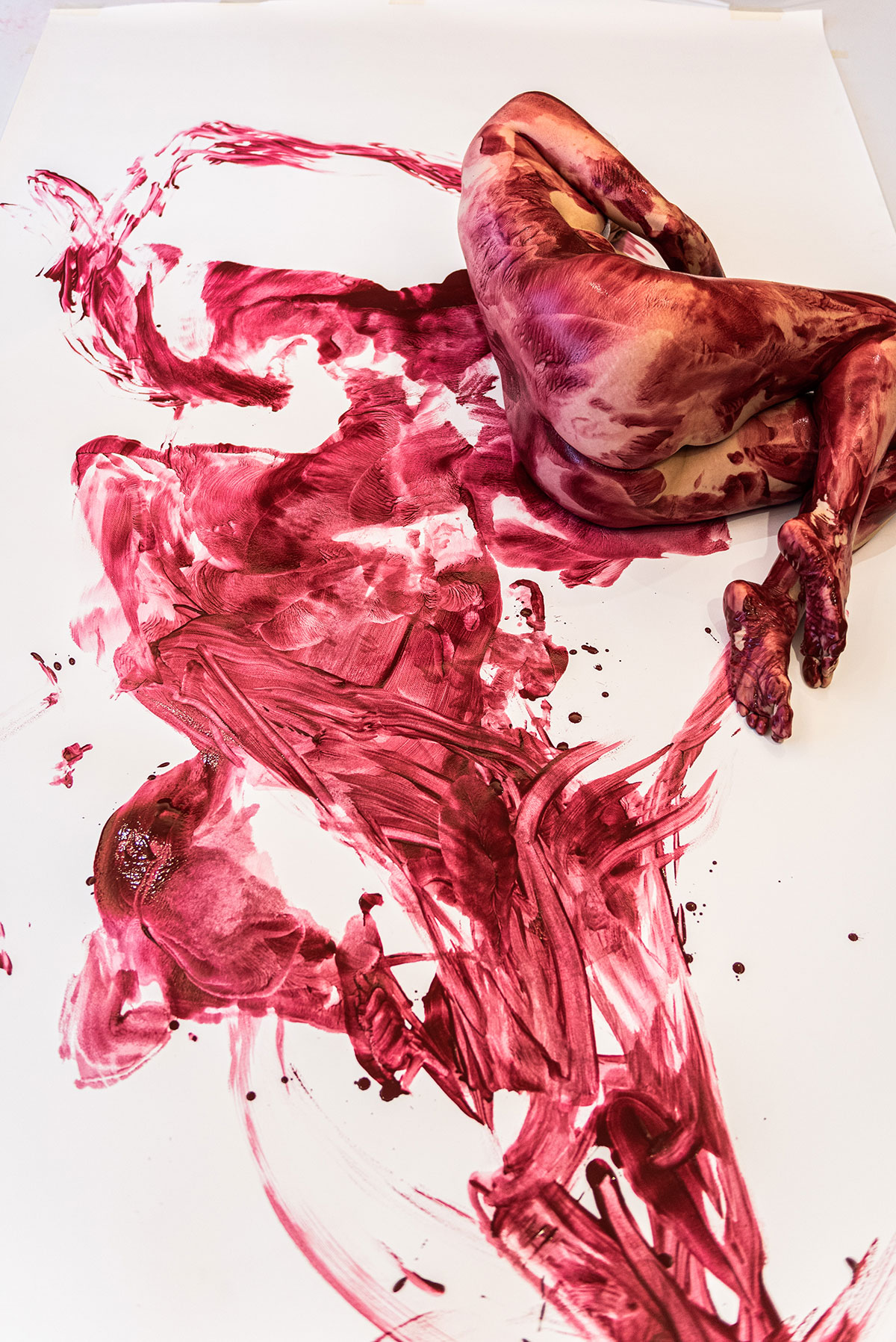
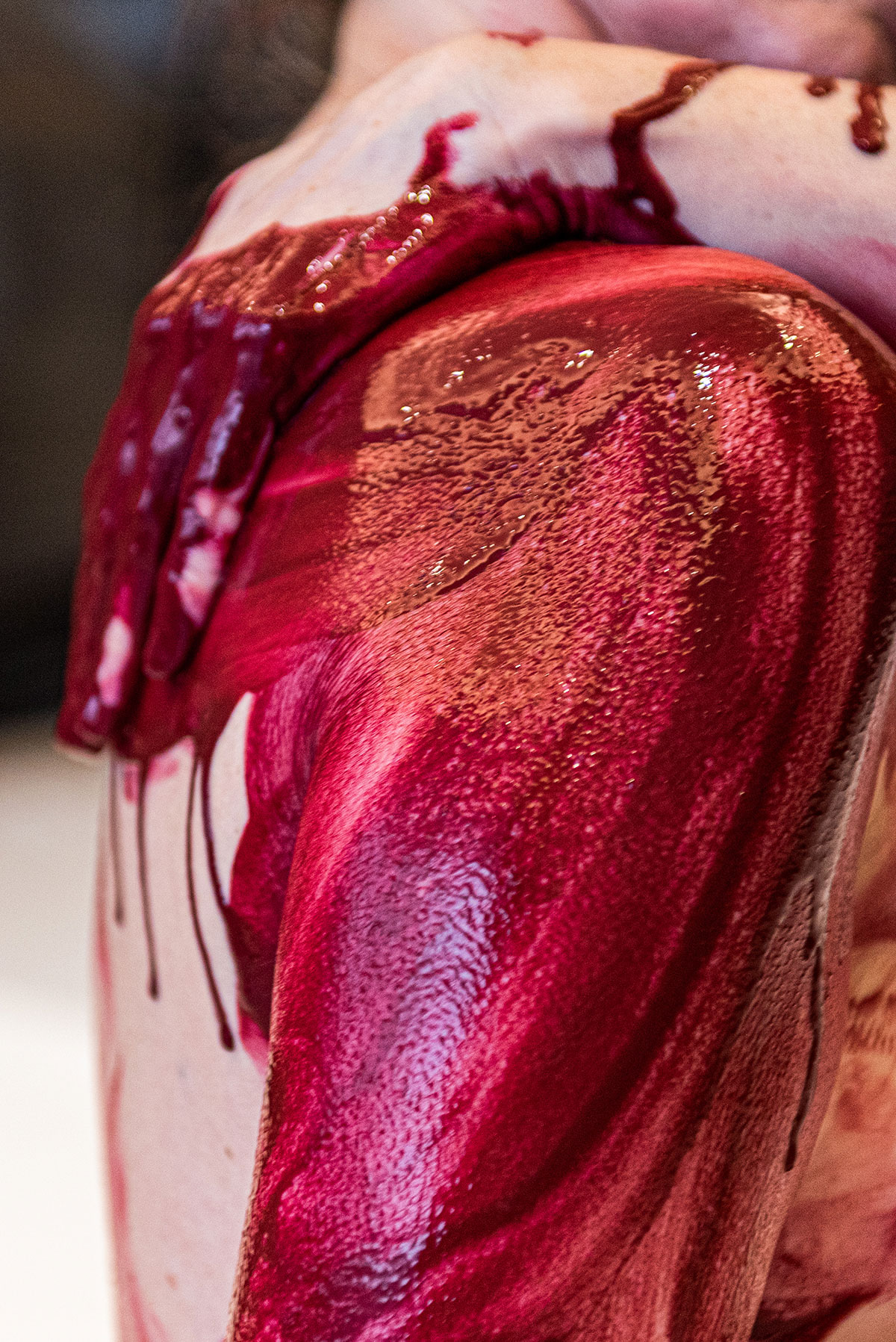
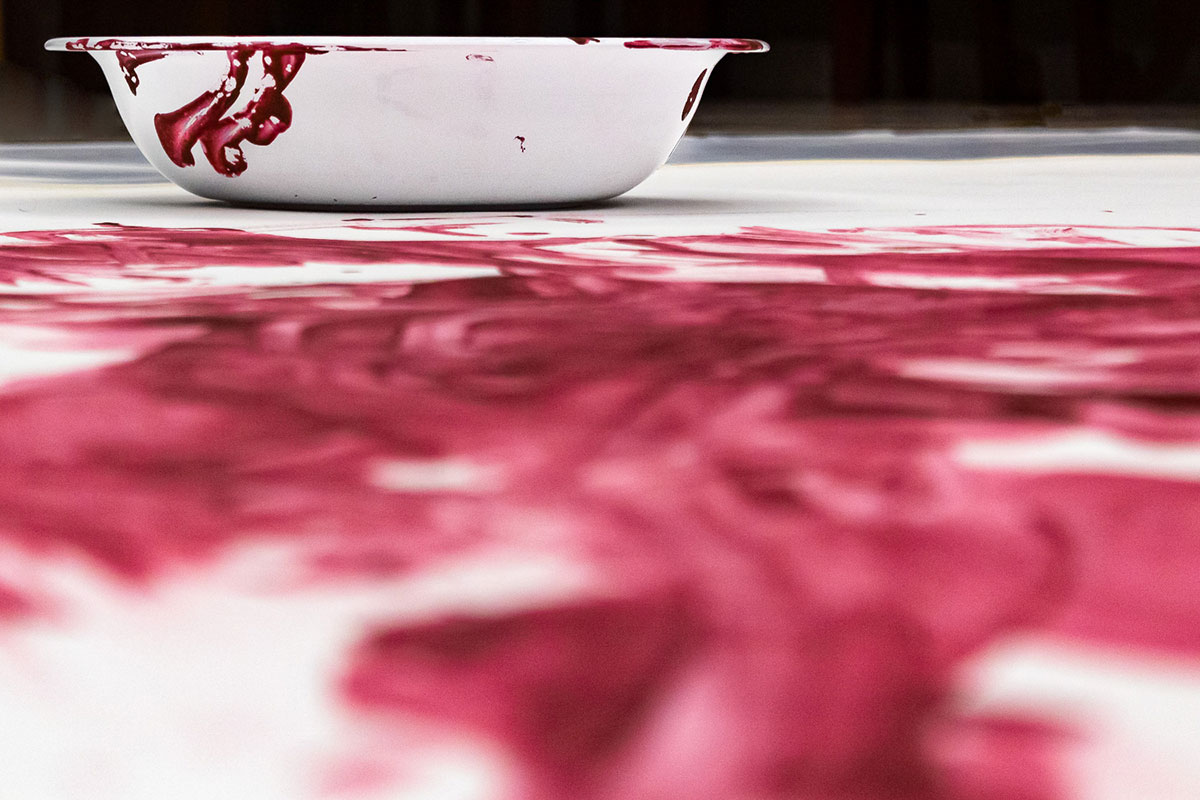

The process
For several months, I kept dry flowers and leaves with me, thinking I could use them for some work. In this project I used them in the first shoots and combined them with flowers that I produced with paper. I did several different ways and tests. I used fresh rose petals of different colors to see the effect. Sometimes I used the stems, in others only the petals. When doing the movements with the flowers and stems of roses with thorns, I got hurt a few times.
Finally, I got rid of the accessories and understood that this was all part of the performance building process. From being able to free myself from everything, I realized that the naked body and the movements speak for themselves. My body was suffering without the flowers. The repetitive body movements on the wooden floor, without clothes, on hot or cold days, in addition to the bruises, allowed me to work through the good and bad cycles that I lived and still live.
In the process of creating and filming the videos, I was alone in my studio. Moments of concentration and inner searching to discover the feelings expressed in the movements executed on the floor. Even in the days of rehearsal and performance development I worked completely naked. This process was essential in order to achieve this result. I needed to be always present with what I wanted to express and there was no place for clothes in this journey.
During the process, I heard the song Lifestream by Dream Machine and I was mesmerized. With it, I did several tests and moves in the quest to be able to express what needed to be. But it was when Ramadinha introduced me to Vânia Dantas Leite’s electroacoustic music that everything changed. I went through a catharsis. To listen to it was distressing. I cried for a whole day. I dealt with my ghosts. Finally, I calmed down by the ocean. And after that, everything was very clear. I knew what I wanted and what I was doing. I blossomed. From that moment on, everything started flowing naturally. And Vânia’s music stayed with me through all of the following performance development. I was no longer distressed as it became part of the process. It was liberating. Hereafter, the creation and performances started to be recorded with her music playing repeatedly. I was in a sort of trance and always ended the creative process exhausted but happy. Very happy.
Noni Levinson, a great friend and photographer, followed the process from the beginning. Noni wore several hats throughout the process. He was a director, photographer, stage manager, IT and much more! He worked his magic in the spaces we had to work with. Used his talent and creativity to make my ideas happen. He introduced me to Leonardo Ramadinha, renowned photographer, who saw potential in the project, and we started working together.
A while later, I invited Deborah Levy Epstein, a visual artist and dancer with a vast performance experience, and a longtime friend, to join the team. Finally, to complete our team, Noni introduced me to Sabrina da Paz, an extremely sensitive photographer and dancer.
Ramadinha, with his talent and vast experience, led the meetings with a content-rich orientation and a unique artistic eye. The meetings continued weekly for a year. The participation of everyone was fundamental to the result and I increasingly understand the importance of working in collaboration, bringing together diverse talents.

